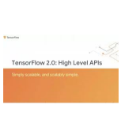A nuclear reactor based on MIT BEAVRS benchmark was used as a typical power generating Pressurized Water Reactor (PWR). The PARCS v3.2 nodal-diffusion core simulator was used as a full-core reactor physics solver to emulate the operation of a reactor and to generate training, and validation data for the ANN. The ANN was implemented with dedicated Python 3.8 code with Google's TensorFlow 2.0 library. The effort was based to a large extent on the process of appropriate automatic transformation of data generated by PARCS simulator, which was later used in the process of the ANN development. Various methods that allow obtaining better accuracy of the ANN predicted results were studied, such as trying different ANN architectures to find the optimal number of neurons in the hidden layers of the network. Results were later compared with the architectures proposed in the literature. For the selected best architecture predictions were made for different core parameters and their dependence on core loading patterns. In this study, a special focus was put on the prediction of the fuel cycle length for a given core loading pattern, as it can be considered one of the targets for plant economic operation. For instance, the length of a single fuel cycle depending on the initial core loading pattern was predicted with very good accuracy (>99%). This work contributes to the exploration of the usefulness of neural networks in solving nuclear reactor design problems. Thanks to the application of ANN, designers can avoid using an excessive amount of core simulator runs and more rapidly explore the space of possible solutions before performing more detailed design considerations.
翻译:本文以MIT BEAVRS基准核反应堆作为样例,利用PARCS v3.2节点扩散反应堆物理模拟器进行仿真,生成人工神经网络(ANN)的训练和验证数据。将专用的Python 3.8代码与Google的TensorFlow 2.0库相结合来实现ANN,本文主要基于从PARCS模拟器生成数据的自动转换过程,相应地开发出ANN。本文研究了各种提高ANN预测结果准确性的方法,例如尝试不同的ANN结构以找到网络隐藏层中最佳的神经元数量等。结果与文献中提出的结构进行了比较,并针对最佳结构进行了不同核参数的预测与核心加载模式的相关性分析。本研究特别关注了对于给定的核心加载模式,预测燃料循环长度的问题,因为它可以被视为在核电站经济运行中的一个目标。例如,单个燃料周期的长度根据初始核心加载模式进行了预测,预测准确率高达99%。本文对于探索神经网络在解决核反应堆设计问题方面的有用性做出了贡献。借助ANN的应用,设计师可以避免使用大量的核心模拟器运行,并在进行更详细的设计考虑之前更快地探索可能的解决方案。



